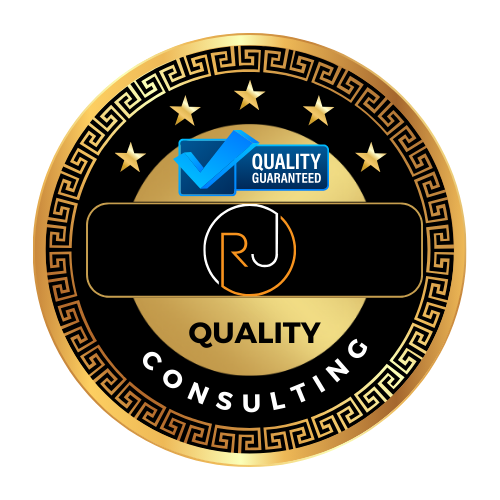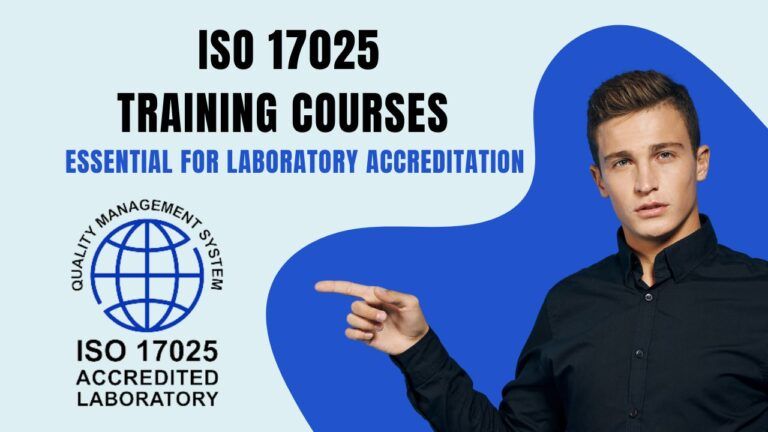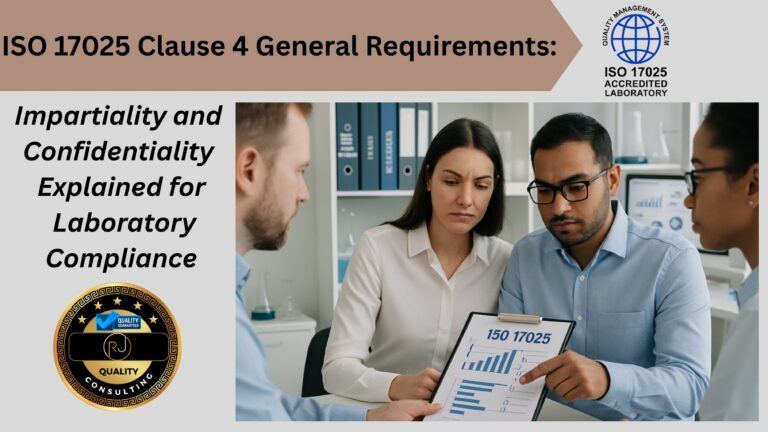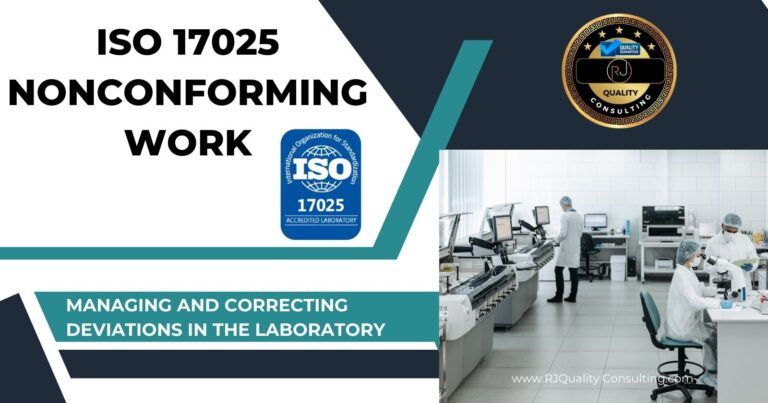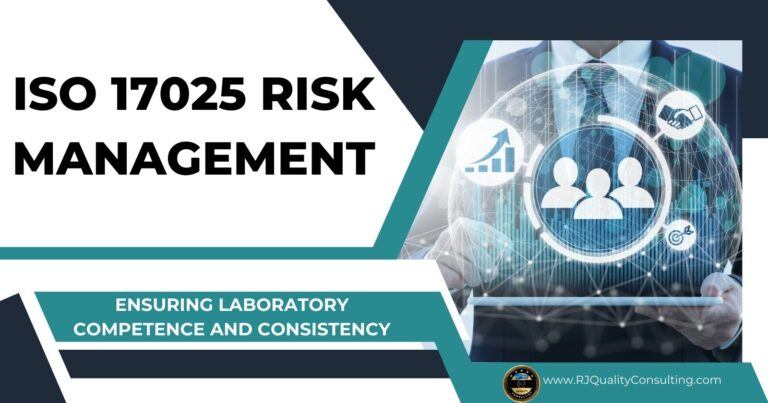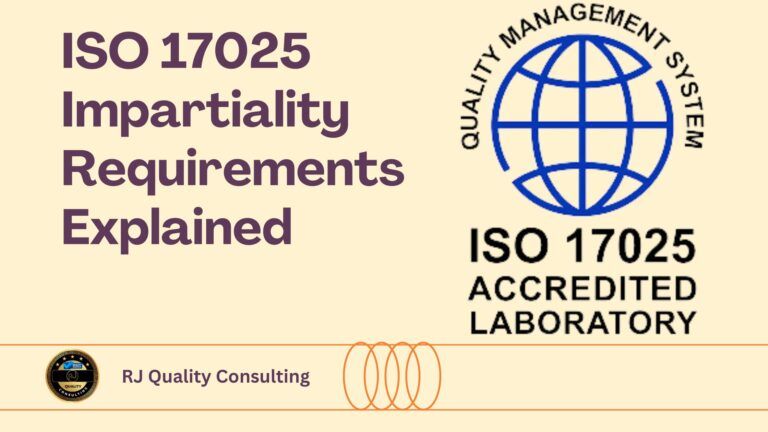ISO 17025 Clause 7 Process Requirements Explained for Laboratory Compliance
ISO 17025 Clause 7 spells out the process requirements that testing and calibration labs need to follow if they want reliable, consistent results. Basically, these requirements shape everything you do in the lab, from how you handle samples to the way you record and report your data. If you want your lab to earn a reputation for technical competence, you’ve got to get your head around the ISO 17025 process requirements and actually put it into practice.
ISO 17025 Clause 7 covers most of the day-to-day activities in a lab—think reviewing requests, picking methods, and keeping technical records. If you nail these requirements, you’ll build trust with your customers and show you’re up to international quality standards.
Key Takeaways
ISO/IEC 17025 Implementation Masterclass
Complete documentation + step-by-step training to get your lab accreditation-ready with confidence.
What you get (features)
- Customizable Quality Manual aligned to ISO/IEC 17025
- All required policies & procedures with matching forms/templates
- 7 training modules (Clauses 4–8, internal audit & management review)
- 20-question quiz + certificate of completion
- Clear instructions on tailoring documents to your lab
Why it matters (benefits)
- Implement faster with proven, audit-ready templates
- Train your team consistently and reduce nonconformities
- Show competence to assessors with documented training & certificate
- Confidently prepare for internal & external audits
- Move from “paper compliance” to a working quality system
- Clause 7 lays out the process requirements for lab activities.
- Following these rules helps you get accurate, consistent results.
- Understanding Clause 7 is a big deal for lab recognition and customer confidence.
Watch: ISO/IEC 17025 Clause 7 – Process Requirements Explained
In this video, I walk you through the most detailed clause of the ISO/IEC 17025:2017 standard — Clause 7. As a certified ISO 17025 assessor, I explain what each subclause means, how to comply with them in your laboratory, and what auditors expect to see during assessments. From method validation to reporting results, this video is packed with practical insights and examples. This video is part of a series of videos where I cover all of the clause elements of the standard. If you would like to see the other clause elements you can read my full blog post on ISO 17025 clauses here.
Need Help with ISO/IEC 17025 Clause 7 Documentation?
Get instant access to a complete set of ISO/IEC 17025:2017-compliant procedures, templates, and forms — including everything you need to meet the technical and process requirements in Clause 7.
Clause 7 Overview: Process Requirements
Clause 7 of ISO/IEC 17025:2017 sets the process requirements for testing and calibration labs. If your lab’s aiming for ISO 17025 accreditation, you’ve got to meet these process expectations.
The main point? Make sure your lab’s results are valid and reliable. Each part of Clause 7 tackles a step in your workflow and helps you keep quality under control at every stage.
Here are the main areas you’ll see in Clause 7:
- Review of Requests, Tenders, and Contracts: Always check and agree on the details before you start any work.
- Method Selection and Validation: Pick solid testing or calibration methods and make sure they’re fit for your purpose.
- Sampling and Sample Handling: Use clear procedures for collecting and managing samples.
- Technical Records: Keep thorough, accurate records—test results, methods, supporting info, the whole lot.
- Measurement Uncertainty: Estimate uncertainty when it matters, so you actually understand how reliable your results are.
- Ensuring Result Validity: Regular checks like audits and proficiency testing keep things on track.
- Reporting Results: Give clients reports that are clear and factual, with all the info the standard asks for.
When a lab follows Clause 7, it’s got a solid system for managing processes. That’s a big help for quality management and makes ISO/IEC 17025 accreditation a lot more achievable.
Detailed Breakdown Of Clause 7 Sub-Clauses

Each sub-clause under Clause 7 spells out what your lab needs to do for technical operations. You get requirements for traceability, consistency, and valid results—covering everything from reviewing requests and managing items to handling data, resolving complaints, and keeping records straight.
7.1 Review Of Requests, Tenders, And Contracts
Always review all requests, tenders, and contracts before you say yes to any work. Make sure your lab can actually meet the technical needs, customer expectations, and deadlines. If something’s outside your scope, let the customer know and agree on changes before you move forward.
Keep documentation for this review process. That means holding onto records of any chats or agreements about contracts or test orders. If anything changes during the agreement, update your records and tell your customers as soon as possible.
Here’s what you’ll be doing in this sub-clause:
- Reviewing technical and admin details
- Confirming you can do the work
- Documenting outcomes and updates
- Communicating with customers
- Handling deviations or extra requirements
7.2 Selection, Verification, And Validation Of Methods
Pick test or calibration methods that are current and appropriate. Maybe they’re standard, published, or something you developed in-house. Before using a method, check that it actually works under your lab’s real-world conditions.
If you’re using non-standard or tweaked methods, you’ll need to validate their performance. That means checking stuff like accuracy, repeatability, and measurement uncertainty—and keeping proof in your documentation.
Keep your methods up to date, especially when there’s a technical breakthrough or a requirement changes. Traceability and solid documentation are non-negotiable. That’s how you show your methods are reliable and fit for purpose.
7.3 Sampling
If your lab handles sampling, set up a sampling plan that spells out how you’ll pick and collect samples. The plan should consider why you’re sampling and the nature of the material.
Document how you collect, label, store, and transport samples. Record the conditions and anything that didn’t go according to plan. Make sure you can trace sampling data back to a specific request or contract.
Check that your sampling methods are suitable, and validate them if you can. Maybe you use statistical methods to pick samples or have steps for dealing with mixed materials—whatever fits your needs.
7.4 Handling Of Test Or Calibration Items
You’re in charge of how test or calibration items are received, stored, tracked, and disposed of. Give each item a unique ID to keep traceability tight from start to finish.
Write up clear procedures for handling, packaging, labeling, and storage. Record every transfer, condition, and observation—like if you spot damage or contamination. That’s how you keep each item’s identity and integrity safe at every step.
If you find a problem or something seems off, report it and talk to the customer. Document all item handling for traceability and data integrity.
7.5 Technical Records
Keep complete technical records for every test or calibration. These records should show a traceable history of activities, conditions, results, personnel, and methods.
Hang onto raw data, observations, charts (like control charts), calibration certificates, and anything else that supports your work. Records need to be clear, accessible, and safe from loss or tampering.
Make sure you can reconstruct what happened and how, just from the records. Include details on deviations, calculations, corrections, and who did the work. These are essential for audits and reviews.
7.6 Evaluation Of Measurement Uncertainty
Estimate measurement uncertainty for all relevant tests and calibrations. Use statistical methods, reference materials, and your process knowledge as the basis for your evaluation.
Identify all the factors that could affect your results—equipment, environment, sample variation, you name it. Document both your process and your results. Where you can, use certified reference materials and interlaboratory comparisons to back up your uncertainty estimates.
Report measurement uncertainty on test reports or calibration certificates when it’s needed. It’s a good way to show your results are reliable and traceable.
7.7 Ensuring The Validity Of Results
Keep an eye on your results with technical controls—control charts, replicate tests, ISO 17025 proficiency testing, whatever fits. Regular quality checks help you spot drift, deviations, or process issues before they get out of hand.
Get involved in interlaboratory comparisons and use reference materials to confirm your measurement performance. Record everything and review the data trends as part of your quality assurance.
If you see nonconforming work or unexpected results, act fast. Take corrective action and keep your lab’s output—and compliance—on track.
7.8 Reporting Of Results
Write up reports or calibration certificates that are clear, accurate, and complete. Include everything needed to interpret the results—test conditions, methods, measurement units, uncertainty if it matters, the works.
If your results are about conformity (like pass/fail), add statements of conformity based on agreed specs. Make sure every entry can be traced back to technical records and requests.
Stick to customer or contract requirements for report formats, and keep your documentation secure. Fix any mistakes in reports quickly, and document the changes to keep the trail clear.
7.9 Complaints
Set up a documented process for handling complaints from customers or outside parties. Complaints could be about delays, errors, weird results, or even just communication hiccups.
Log every complaint with details on the issue, how you investigated, what you did, and how it ended. Keep records of all correspondence, findings, and any corrective actions you took.
Look at complaint trends to spot bigger issues or areas to improve. Regular audits of your complaints process help keep things transparent and effective.
7.10 Nonconforming Work
Have a procedure for spotting and dealing with nonconforming work—tests, calibrations, or reports that don’t meet the mark. This could be mistakes, method deviations, or equipment failures.
Act straight away to contain or fix the problem. Let the customer know if needed, and decide whether you’ve got to redo the work or pull the results. Record what happened, what you did, and how it turned out.
Document all nonconforming work. Watch for patterns so you can prevent it happening again and strengthen your processes with corrective action.
7.11 Control Of Data And Information Management
Put controls in place to protect your data’s integrity, confidentiality, and availability. This covers both paper records and electronic systems like LIMS.
Set up clear steps for entering, reviewing, backing up, storing, and retrieving data. Only let authorized people in, and guard against loss, unauthorized changes, or corruption.
Validate all data and information management systems before using them, and review them regularly. Keep records organized and traceable for easy review and audit. Protect confidential info and stick to legal and contract obligations.
Conclusion & Resources

If you’re running a lab, getting Clause 7 right is absolutely central to managing all your technical processes. You need solid steps for reviewing requests, picking methods, handling samples, reporting results, and keeping records that actually make sense. That’s what keeps your lab’s work valid and reliable.
If you already follow ISO 9001, you’ll probably notice some overlap. Both standards care about consistent processes and documentation, but ISO 17025 digs deeper into the technical requirements for testing and calibration labs.
Want more info?
Auditors assess Clause 7 by observing actual laboratory activities and reviewing technical records. You can learn more about how laboratories are evaluated for accreditation in ILAC’s guidance on laboratory accreditation.
Tip: Make a checklist for each subclause in Clause 7. It’s a handy way to spot any gaps before you get audited.
| Resource | Details |
|---|---|
| ISO 17025:2017 Clause 4 Video Blog | ISO 17025 Clause 4 walk-through |
| ISO 17025:2017 Clause 5 Video Blog | ISO 17025 Clause 5 walk-through |
| ISO 17025:2017 Clause 6 Video Blog | ISO 17025 Clause 6 walk-through |
Stick with up-to-date resources and reviews to keep your lab’s processes aligned with the standard. It’ll make audit prep smoother and help you deliver results your clients can count on.
You may also want to consider the following articles:
Frequently Asked Questions

Clause 7 of ISO 17025 covers the key process requirements for labs. You’ve got to handle things like control of lab activities, documentation, staff competence, sample handling, and reporting results.
What are the main provisions of Clause 7 concerning laboratory operations according to ISO 17025?
Clause 7 lays out what you need to do when reviewing test requests, picking and validating methods, and handling sampling. It doesn’t stop there—equipment and technical records? You’ve got to manage those properly too. Every lab activity should follow clear steps if you want to stay compliant, even if sometimes those steps feel a bit much.
How should a laboratory establish and maintain process control to meet ISO 17025 Clause 7 requirements?
To keep process control in check, you’ll want to define and document every activity tied to testing or calibration. Make sure procedures stay current, and that everyone’s actually following them (not just pretending). Regularly check up on performance—don’t just set it and forget it—so you catch any issues before they turn into bigger headaches.
What are the documentation requirements under Clause 7 of ISO 17025 for laboratories?
Keep detailed technical records for every part of your lab’s work. That means work instructions, raw data from tests and calibrations, calculations, and notes on what actions you took. Make sure records stay accurate and up-to-date, and have them handy if someone wants to review them. It’s a bit of a pain sometimes, but it beats scrambling for missing info later.
How does ISO 17025 Clause 7 define criteria for ensuring personnel competency and training?
Staff need to have the right skills and qualifications for what they’re doing—no shortcuts here. Keep up with ongoing training and assessments so you spot gaps in knowledge before they cause real problems. And yeah, document all the training and competency checks, even if it feels like overkill at times.
In what way must a laboratory handle sampling procedures to comply with ISO 17025 Clause 7?
Sampling procedures have to stick to approved, documented methods. Spell out every step, from when and how you grab samples to how you handle them. Oh, and don’t forget to jot down any conditions or factors that could mess with the sample’s integrity. It’s all about control—even if it feels a bit obsessive at times.
What are the requirements for reporting results as stipulated by ISO 17025 Clause 7?
You’ve got to put together reports that make sense—clear, accurate, and packed with all the details someone needs to actually get what the results mean. Make sure you mention the method you used, any measurement uncertainty, and if anything was done differently from the usual. Tie the report directly to the specific lab activity and the person who handled it. No skipping on traceability here.
🕒 Book Your Free 45-Minute Consultation
Have questions about ISO/IEC 17025 or ISO 9001 implementation or accreditation? Schedule a free 45-minute consultation with me to discuss your Company or laboratory’s needs and how we can achieve compliance together.
Schedule Your Consultation